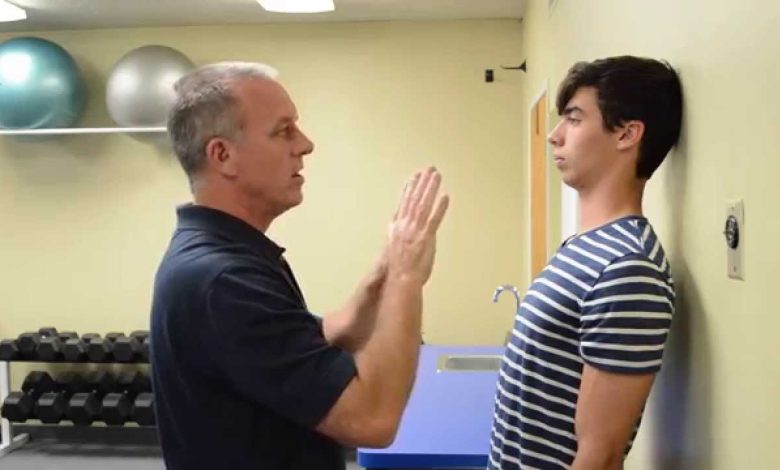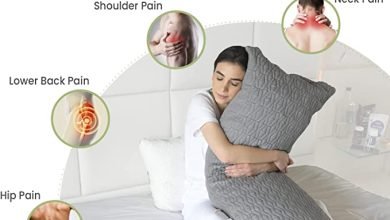Fix Your Head Posture with Physical Therapy

The complication of slouched-forward shoulders and kyphosis (rounded upper back) that has become a common effect of modern-day living and working is forward head posture (FHP).
Forward Head Posture: What Causes It?
This “humpback” position can cause pain in the back of the neck muscles, as well as compression on the cervical vertebrae, which support the head and protect the spinal cord.
This is why: When you circle forward and down with your shoulders and upper back, your head automatically follows, drawing your attention lower as well. You must lift your head to see what’s in front of you, such as your computer screen or the view out the front windshield.
Your jaw will thrust forward as a result, forming a sharp crease in the back of your neck where a straight line should run from the back of your head to the middle of your upper back.
Other factors that contribute to kyphosis-related forward head posture include regularly staring down at a phone, tablet, or other device; conducting close work, such as stitching; and routinely carrying a considerable amount of weight in front of your body, such as a child.
Consequences
Chronic forward head posture might have serious implications. The weight of the head puts extra strain on the neck and cervical spine in this condition, throwing the body out of balance.
This mismatch can cause a variety of problems over time:
- The cervical spine is hyperextended.
- The front of the chest constricts.
- Arms and hands nerve problems (pins and needles, numbness)
- Headache
- Neck, shoulder, and joint pain, stiffness, and restricted range of motion) are all symptoms of tension neck syndrome.
- Pain in the temporomandibular joint
- Issues of Balance
- Respiratory function and efficiency are reduced.
When Should You See a Doctor?
It’s time to contact your doctor or therapist if you’re having headaches, TMJ discomfort, or other symptoms of forward head posture, or if your neck and shoulder pain is persistent (lasting more than a few days) or affecting your quality of life. They can help you figure out what’s causing your problems and send you to a physical therapist who can create a strengthening and stretching programme that’s suited to your specific needs and physiology. With the latest technologies, you can now enjoy at home physical therapy treatment.
How to Correct a Forward Head Position
Forward head posture can be reduced by making ergonomic changes to your office, environment, or lifestyle behaviors that make sitting or standing upright more comfortable. This, however, may not be sufficient.
A 2017 study indicated that targeted exercise was more helpful than workstation adjustment for reducing office-related neck, shoulder, and back discomfort.
What Role Does Shoulder Misalignment Play in Neck Pain?
- Exercises
That’s why stretching and strengthening exercises may be so beneficial. Individual disorders that contribute to forward head posture, such as kyphosis, are addressed in the following three exercises. Each day, try to do these exercises for at least 15 minutes. 4 It’s preferable to complete them all in one sitting (although you can do cervical retraction throughout the day as well).
- Retraction of the Cervical Cord
Retraction means “to bring back” and cervical means “neck.” The purpose of this important posture exercise is to align your head with your cervical spine. 5
To complete the exercise, follow these steps:
- To begin, sit up straight in a chair.
- Tuck your chin into your chest gently.
- Press the back of your head on the wall behind you while holding the tuck. You’ll notice that your head is drifting diagonally toward the ceiling.
- Repeat the stretch for a few seconds, then relax.
At the same time, do 20 to 30 reps. Alternately, do 5 to 8 reps four to five times per day. Need help getting back in the game? Park Sports Physical Therapy can help! Their team of experienced therapists offers sports rehabilitation, vestibular therapy, pelvic floor therapy, hand therapy, and occupational therapy to help you get back to your old self. They have three convenient locations in Brooklyn, so they’re always close by when you need them. For more info call at (718) 230-1180.
- Strengthener for Rhomboid
The rhomboids are the muscles in the upper back that support it and keep it in good alignment. They’re in charge of drawing the shoulder blades together and pushing the shoulders down and away from the ears.
You may activate them by pressing your shoulder blades toward each other, which will bring your shoulders down and back naturally, reversing the forward droop. Reversing kyphosis and the forward head position it generates can be as simple as strengthening the rhomboid muscles to make them more resistant to gravity’s forward pull.
To complete the exercise, follow these steps:
- Take a seat in a sturdy chair.
- As if hugging yourself, wrap your arms around your ribs.
- Try to stretch out with your fingers and touch your shoulder blades, bearing in mind that you’ll only be able to reach the outside boundary.
- Then release the hug by “walking” your fingers downward to try to find the bottom tips of each blade.
- Raise your elbows to bring your upper arms parallel to the floors and place both hands behind your head.
- Squeeze your shoulder blades together while holding this position to stimulate the rhomboid muscles. Hold for 5 counts before slowly releasing.
- Rep, this time visualising a quarter between your shoulder blades that you must hold in place. This will assist you in increasing the intensity of your muscular contractions.
- Hold for 5 counts before slowly releasing.
Stretch your pectoral muscles.
The third exercise is a basic stretch of the pectoralis muscles, or pecs, which span the width of your chest. These muscles pull together and stiffen up as the shoulders slump forward, therefore it’s necessary to try to loosen them up.
A corner pec stretch is similar to a wall push-up, however the focus is on maintaining the posture that causes your chest muscles to lengthen.
The basic moves are as follows:
- Place yourself in front of a wall’s corner.
- Place your palms and forearms against each neighbouring wall with your elbows bent 90 degrees and your upper arms parallel to the floor.
- Inhale, then bring your abdominal muscles toward your spine as you exhale to stabilise your lower back.
- Lean your torso against the wall without shifting your feet until you feel a slight stretch across the full front of your chest.
- Hold for 20 to 30 seconds before returning to the beginning position and repeating three to five times more.




